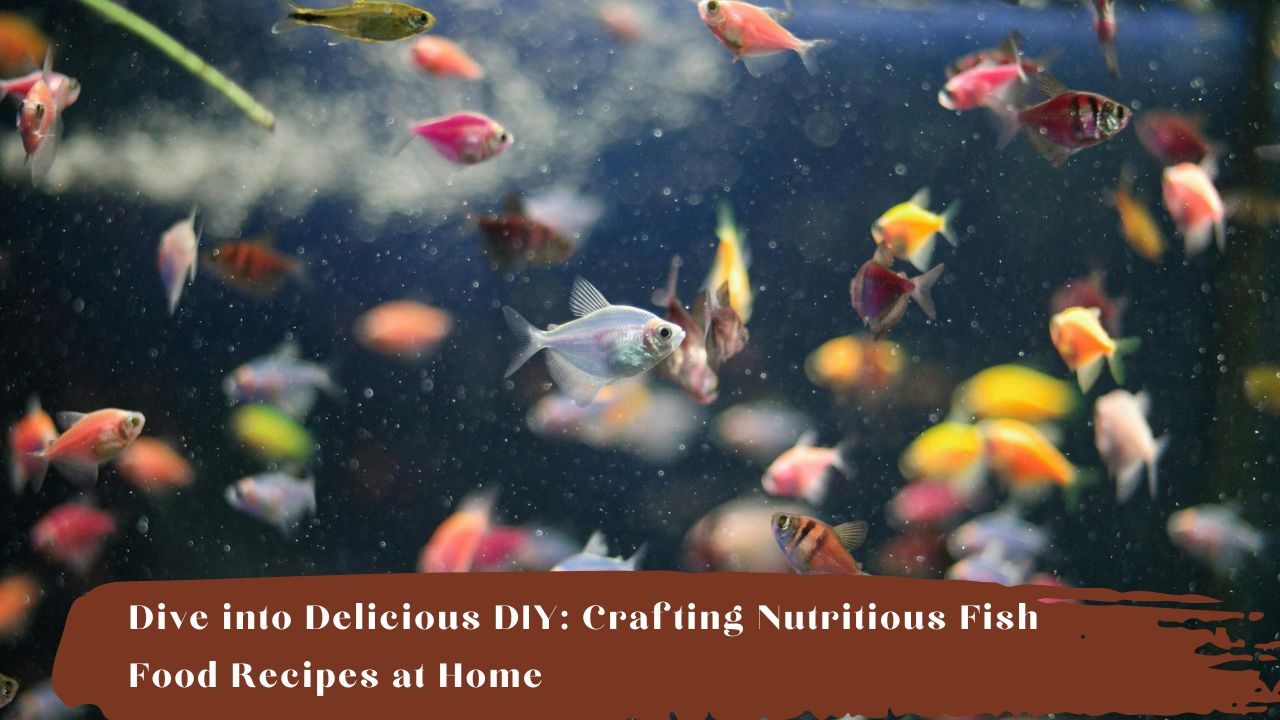For any devoted fishkeeper, ensuring the vibrant health and happiness of your finned friends is paramount. While commercially available fish food offers convenience, crafting your own allows you to control ingredients, cater to specific dietary needs, and potentially save money.
This comprehensive guide dives deep into the world of DIY fish food recipes, equipping you with the knowledge and inspiration to create delectable and nutritious meals for your underwater companions.
Understanding Your Fish’s Dietary Needs
Before venturing into the kitchen, it’s crucial to understand the dietary requirements of your particular fish species. Fish can be broadly categorized into three groups based on their feeding habits:
- Herbivores: These plant-eating fish thrive on a diet rich in algae, vegetables, and spirulina.
- Omnivores: These fish enjoy a mixed diet of plant and animal matter, including flakes, pellets, and brine shrimp.
- Carnivores: These fish are primarily protein-driven and require a diet rich in bloodworms, shrimp, and other meaty foods.
Selecting the Right Ingredients
The beauty of DIY fish food lies in the ability to customize it with fresh, wholesome ingredients. Here’s a breakdown of some key components to consider:
- Protein Sources:
- Fish: Salmon, shrimp, mussels, and other seafood offer a concentrated protein punch.
- Eggs: A readily available source of protein and healthy fats.
- Spirulina: This blue-green algae boasts a rich protein profile and essential vitamins.
- Vegetable Matter:
- Spinach: Packed with vitamins A, C, and K, it also provides roughage for digestive health.
- Peas: Rich in protein, fiber, and vitamins, peas are a well-rounded choice.
- Carrots: A source of beta-carotene (vitamin A) and antioxidants.
- Binding Agents:
- Gelatin: This unflavored protein helps solidify your fish food mixture.
- Agar Agar: A vegan alternative to gelatin, derived from seaweed.
Essential Kitchen Tools
- Blender or food processor: Finely chops and blends ingredients into a uniform consistency.
- Ice cube trays: Perfect for portioning out and freezing your homemade fish food.
- Spoons and spatulas: For mixing and handling the food mixture.
DIY Fish Food Recipes for Every Appetite
1. Tropical Flake Feast (for Omnivores):
This recipe caters to the diverse palates of most tropical fish communities.
- Ingredients:
- 2 cups cooked shrimp (peeled and deveined)
- 1 cup cooked spinach
- 1/2 cup cooked peas
- 1/2 cup spirulina powder
- 1/4 cup oatmeal (uncooked)
- 1 tablespoon kelp flakes
- 1 envelope unflavored gelatin
- 1/2 cup water
- Instructions:
- In a large pot, steam or boil the shrimp, spinach, and peas until cooked through. Let cool completely.
- Combine all ingredients except gelatin and water in a blender or food processor. Blend until smooth.
- In a separate bowl, whisk together the gelatin and water. Heat over low heat until the gelatin dissolves completely.
- Slowly add the gelatin mixture to the blended ingredients while pulsing the blender continuously.
- Pour the mixture into ice cube trays and freeze for at least 4 hours.
- Once frozen, pop out the cubes and store them in an airtight container in the freezer.
2. Spirulina Spirals (for Herbivores):
This recipe provides a vibrant and nutritious boost for herbivorous fish.
- Ingredients:
- 2 cups blanched zucchini
- 1 cup blanched broccoli florets
- 1/2 cup spirulina powder
- 1/4 cup nori seaweed sheets (torn into small pieces)
- 1/4 cup blanched peas
- 1 envelope unflavored gelatin
- 1/2 cup water
- Instructions:
- Steam or boil the zucchini, broccoli, and peas until tender. Let cool completely.
- Combine all ingredients except gelatin and water in a blender or food processor. Blend until smooth.
- Following the same method as recipe 1, dissolve the gelatin in hot water and incorporate it into the blended mixture.
- Pour the mixture into a shallow baking dish or silicone mold and freeze for at least 4 hours.
- Once frozen, cut the food into small squares or break into flakes suitable for your fish. Store in an airtight container in the freezer.









